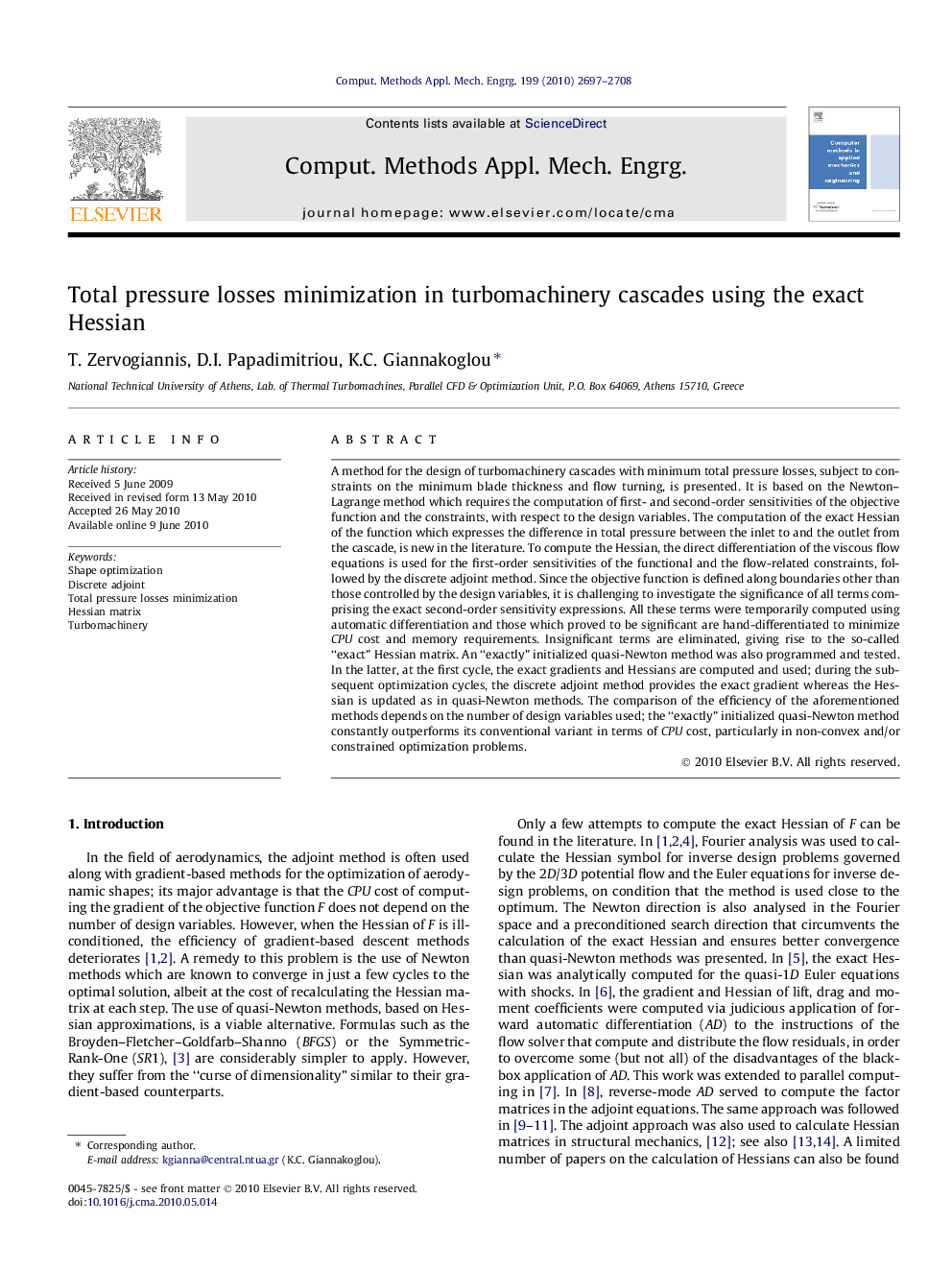| Article ID | Journal | Published Year | Pages | File Type |
|---|---|---|---|---|
| 498724 | Computer Methods in Applied Mechanics and Engineering | 2010 | 12 Pages |
A method for the design of turbomachinery cascades with minimum total pressure losses, subject to constraints on the minimum blade thickness and flow turning, is presented. It is based on the Newton–Lagrange method which requires the computation of first- and second-order sensitivities of the objective function and the constraints, with respect to the design variables. The computation of the exact Hessian of the function which expresses the difference in total pressure between the inlet to and the outlet from the cascade, is new in the literature. To compute the Hessian, the direct differentiation of the viscous flow equations is used for the first-order sensitivities of the functional and the flow-related constraints, followed by the discrete adjoint method. Since the objective function is defined along boundaries other than those controlled by the design variables, it is challenging to investigate the significance of all terms comprising the exact second-order sensitivity expressions. All these terms were temporarily computed using automatic differentiation and those which proved to be significant are hand-differentiated to minimize CPU cost and memory requirements. Insignificant terms are eliminated, giving rise to the so-called “exact” Hessian matrix. An “exactly” initialized quasi-Newton method was also programmed and tested. In the latter, at the first cycle, the exact gradients and Hessians are computed and used; during the subsequent optimization cycles, the discrete adjoint method provides the exact gradient whereas the Hessian is updated as in quasi-Newton methods. The comparison of the efficiency of the aforementioned methods depends on the number of design variables used; the “exactly” initialized quasi-Newton method constantly outperforms its conventional variant in terms of CPU cost, particularly in non-convex and/or constrained optimization problems.
